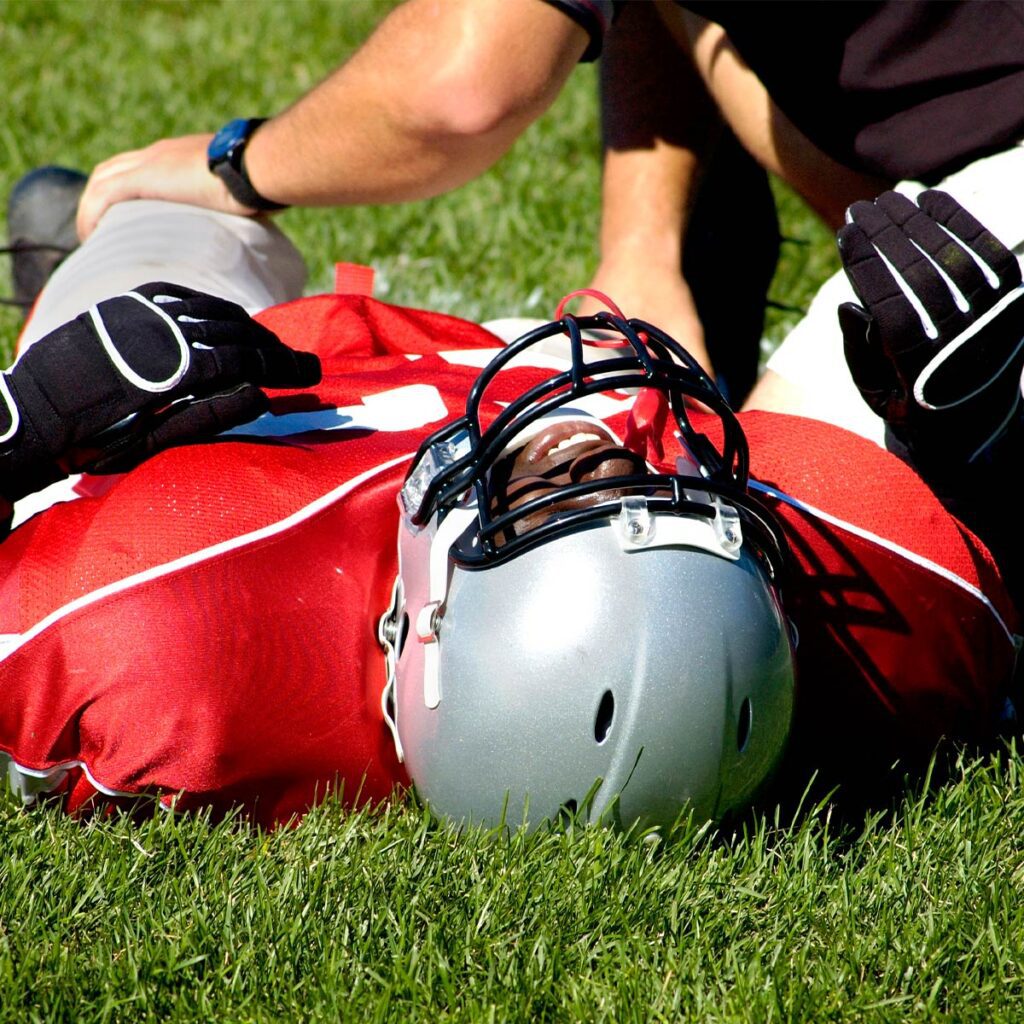A Guide To Sports Injuries
Participation in sports, recreation, and exercise (SRE) is popular in American culture. Participation in SRE activities contributes to health-related fitness; however, the risk of injury is inherent in any physical activity. Risk of injury varies by many factors, including the specific activity and a person’s age. The highest incidence of sports injuries occurs among children 5–15, followed by 15–24. Children younger than 15 account for 40 percent of all SRE-related emergency department visits. Adolescents and young adults under age 25 represent almost one-third of all SRE-related injuries. Males experience twice the number of injuries than females.
Types of Injuries and Symptoms
There are two basic types of sports injuries: traumatic (acute) injuries or overuse (stress) injuries. Acute injuries occur suddenly when playing or exercising. Common examples include wrist fractures, torn knee ligaments, ankle sprains, shoulder dislocations, and hamstring muscle strains.
Signs of an acute injury can include:
- Sudden, severe pain
- swelling
- not being able to place weight on a leg, knee, ankle, or foot
- an arm, elbow, wrist, hand, or finger that is very tender
- not being able to move a joint as normal
- a bone or joint that is visibly out of place
Overuse injuries, also known as stress or chronic injuries, occur when tendons, muscles, bone and joints experience stress too rapidly or endure more than they are prepared to handle. Common examples include tennis elbow, rotator cuff tendinitis and impingement, Little League elbow, runner’s knee, jumper’s knee, Achilles tendinitis and shin splints. Signs of a chronic injury include pain when you play, pain when you exercise, a dull ache when you rest, and swelling.
Prevalence
About 95 percent of sports injuries are due to minor trauma involving soft-tissue injuries – injuries that affect the muscles, ligaments, and/or tendons. According to the CDC, more than 10,000 people receive treatment in the nation’s emergency departments (EDs) each day for injuries sustained in sports, recreation and exercise activities. At least one of every five ED visits for an injury results from participation in sports or recreation. Each year, it is estimated that Americans make an estimated 1.5 million ED visits for injuries sustained while playing basketball, baseball, softball, football, or soccer. Approximately 715,000 sports and recreation injuries occur each year in school settings alone.
Top Injuries

Some of the most common sports injuries involve broken bones, head and facial injuries, knee trauma, inflammation, strains and sprains, and back and neck injuries. Contact sports account for a large number of sports-related injuries.
The top 10 most prevalent sports injuries are:
- Muscle pulls (probably the most common)
- Neck pain (normally a pulled muscle or a muscle spasm in the neck)
- Shoulder impingement (involves a painful pinching and inflammation of the tendons of the shoulder with arm movements)
- Lower back pain (usually experienced from twisting awkwardly lifting a heavy weight or doing some unpracticed activity)
- Tennis elbow (an inflammation of the tendons that connect muscles to bones in the elbow)
- Runner’s knee (caused by a misalignment of bones
- Overuse
- Trauma or problems with feet)
- Shin splints (throbbing or aching in the shins)
- Ankle sprain (experienced when the foot rolls to the outside and sprains the ligaments on the outside of the ankle)
- Achilles tendinitis (an inflammation of the Achilles tendon usually due to overuse)
- Arch pain in the foot (most often inflammation of the plantar fascia that extends the length of the bottom of the foot and lends support to the arch)
Prevention
These tips from the National Institute of Health can help you avoid sports injuries.
- Pay attention to your form.
- Do warm-up exercises and stretch.
- Cool down after hard sports or workouts.
- Wear proper shoes and gear.
- Know your body’s limits.
- Build up your exercise level gradually.
- Condition with cardiovascular, strengthtraining and flexibility exercises.
- Group children by their skill level and body size, not by their age.
- Try to find sports programs that have certified athletic trainers.
- Get a physical exam before you start playing sports.
- Follow the rules of the game.
- Don’t play when you are very tired or in pain.
Treatment
Treatment often begins with RICE, an acronym that stands for rest, ice, compression, elevation. Other treatments include nonsteroidal anti-inflammatory drugs (NSAIDs) such as aspirin, ibuprofen, ketoprofen, or naproxen sodium; immobilization using slings, splints and casts; surgery; and rehabilitation or exercise.

